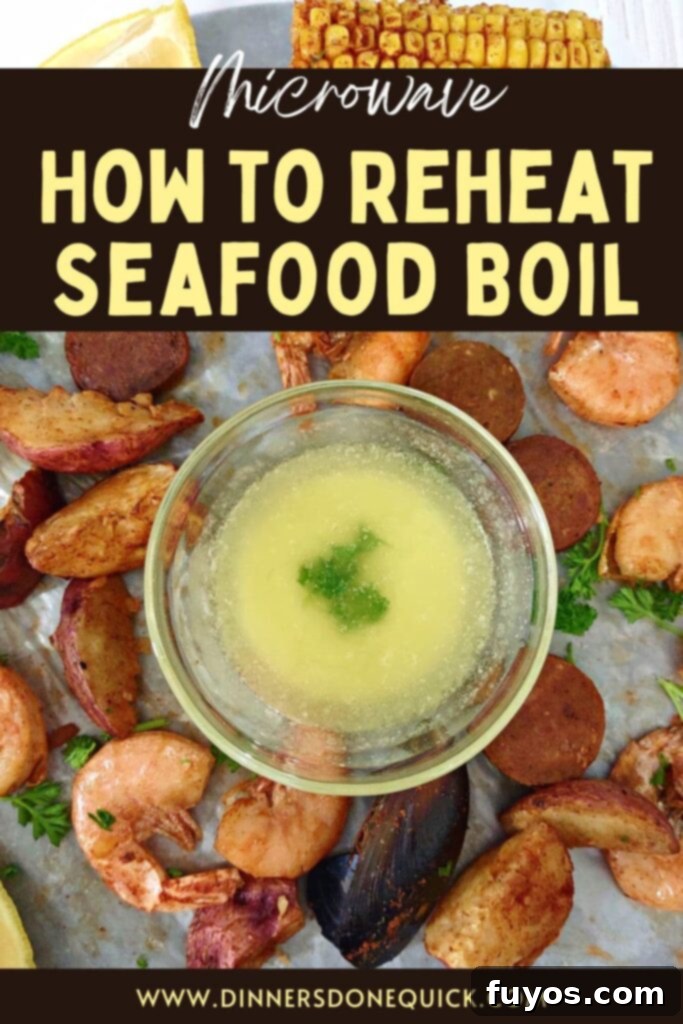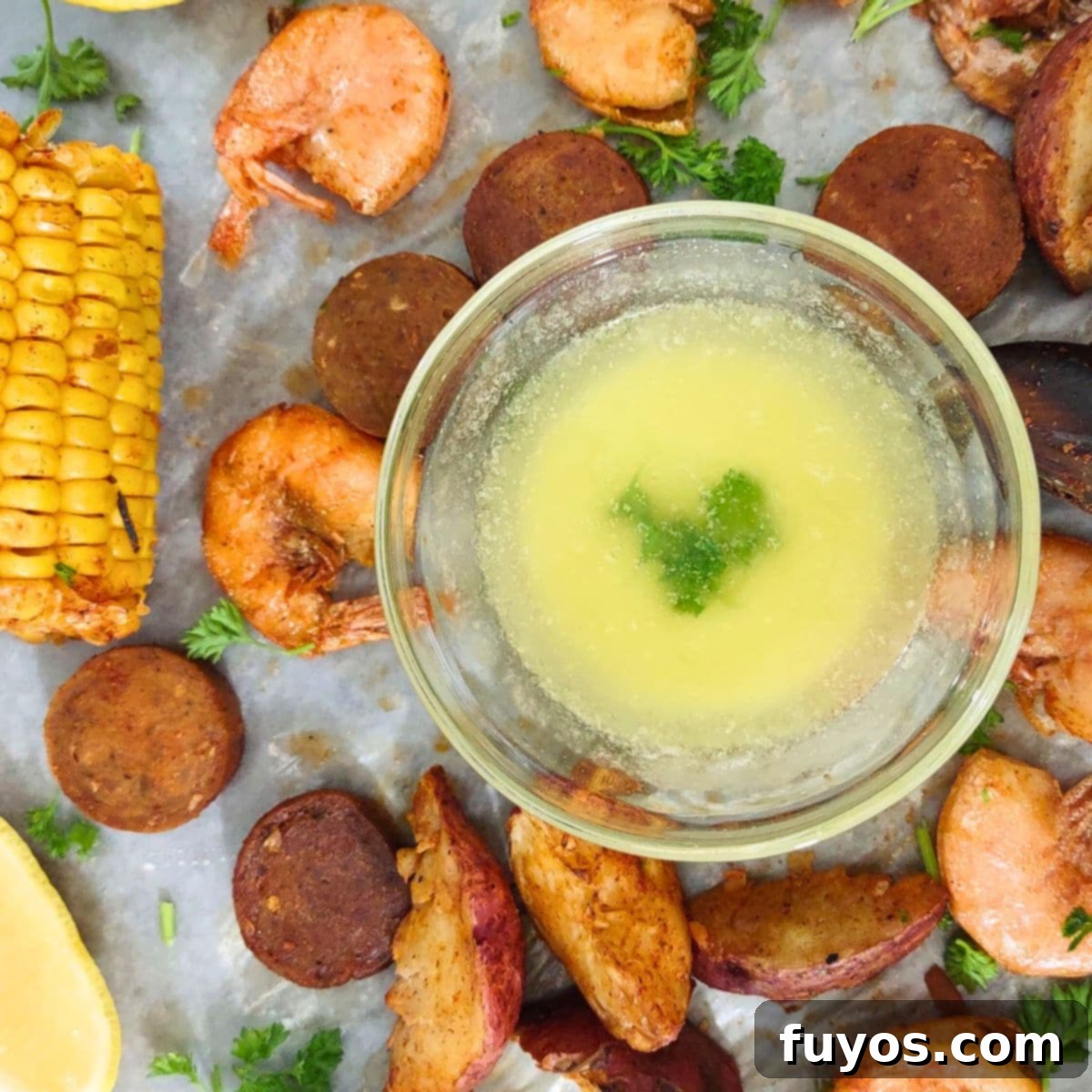Mastering Microwave Seafood Boil Reheat: Your Quick Guide to Delicious Leftovers
There’s nothing quite like the communal joy and incredible flavors of a fresh seafood boil. Piles of succulent shrimp, tender crab legs, sweet corn on the cob, and savory potatoes, all bathed in a rich, spicy seasoning – it’s a feast for the senses! But let’s be honest, whether you enjoyed it at your favorite restaurant or created a culinary masterpiece at home, one thing is almost inevitable: you’ll have leftovers! And while the idea of reheating seafood can sometimes be daunting, leading to rubbery textures or lost flavors, fear not! If you’ve ever found yourself wondering how to reheat seafood boil in the microwave while maintaining its mouth-watering quality, you’ve come to the right place. This comprehensive guide will walk you through the fastest, easiest, and most effective method to transform your cold seafood boil into a perfectly warmed, second-round delight, ensuring every bite is as delicious as the first.
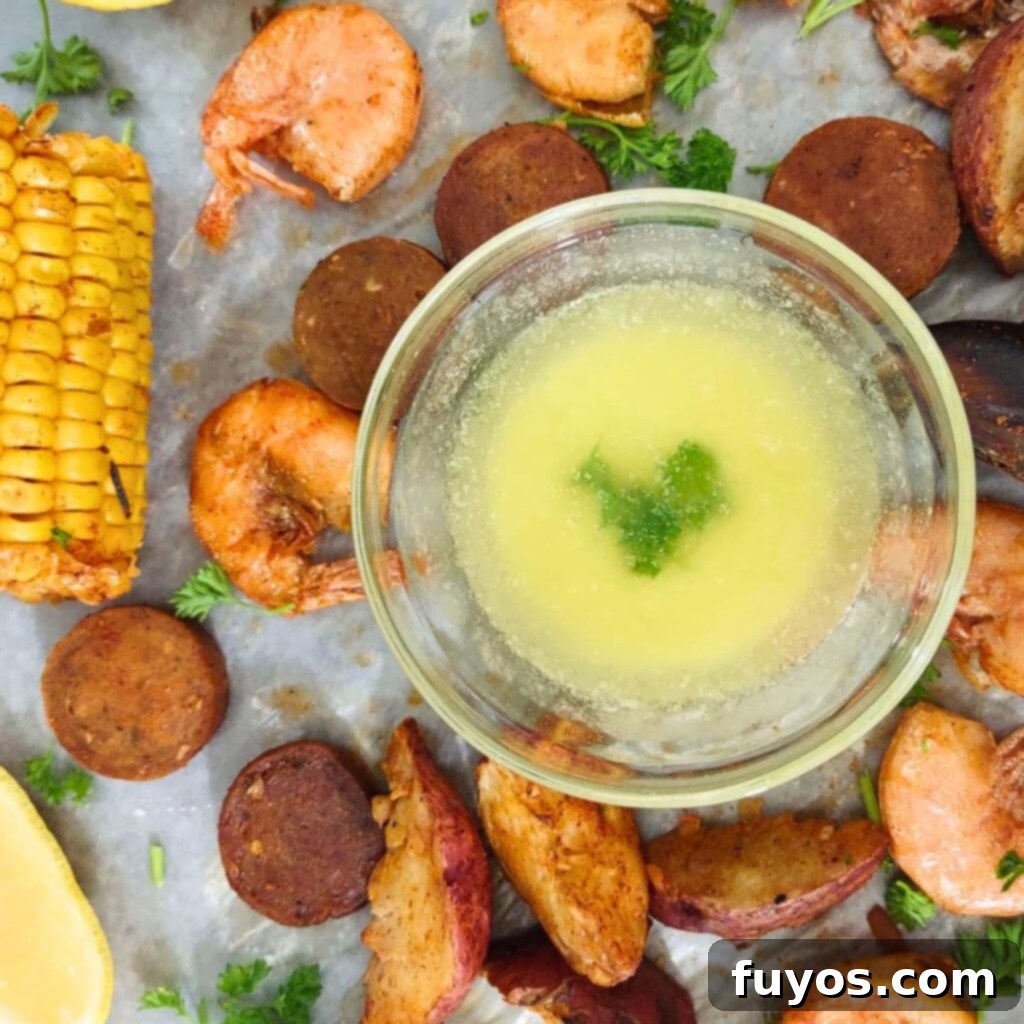
Why You Need This Guide: The Fastest Way to Enjoy Leftovers
Seafood boils are renowned for their generous portions, often meaning a delightful bounty of food. Unless you’re feeding a massive gathering, chances are you’ll be faced with a substantial amount of delicious leftovers. And what could be better than a quick, satisfying lunch or dinner without the hassle of cooking from scratch? Leftovers are a lifesaver for busy schedules!
While other methods like the oven or stovetop can certainly reheat your seafood boil, they often demand more time and attention. Who wants to preheat an oven for 20 minutes or stand over a stove, constantly tending to a pot, especially when hunger strikes? The microwave offers an unparalleled speed and convenience that makes it the ideal choice for busy individuals and families.
Many shy away from microwaving seafood, fearing it will turn rubbery or dry. This concern is valid, as seafood is delicate and prone to overcooking. However, with the right technique and a little scientific understanding of how microwaves heat food, you can achieve perfectly juicy shrimp, tender crab, and steamy, flavorful vegetables every time. In fact, I recently prepared an Air Fryer Frozen Seafood Boil and am looking forward to enjoying the expertly reheated leftovers for lunch today.
Forget the long waits and tedious stirring – our microwave method is designed to bring your seafood boil back to life quickly and flawlessly. You’ll learn the secrets to ensuring your shrimp remains succulent, your crab tender, and your potatoes stay wonderfully soft and steamy, ready to be devoured in minutes. This guide empowers you to enjoy your seafood boil for a second time, just as delicious as the first, without any fuss.
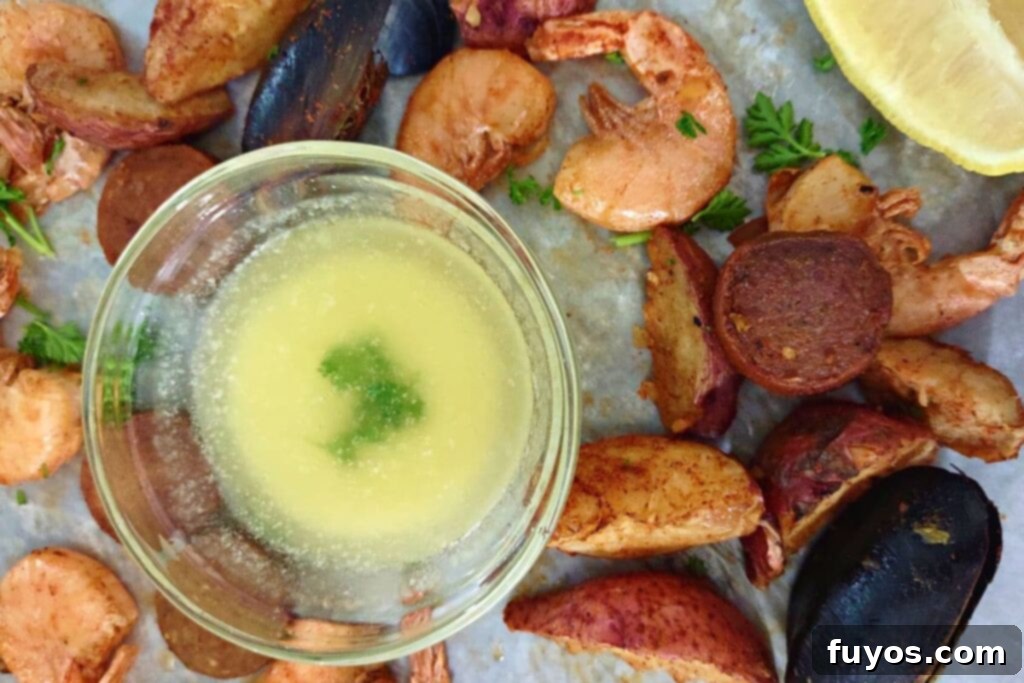
Quick + Easy Recipes
straight to your inbox
What You’ll Need for Microwaving Seafood Boil
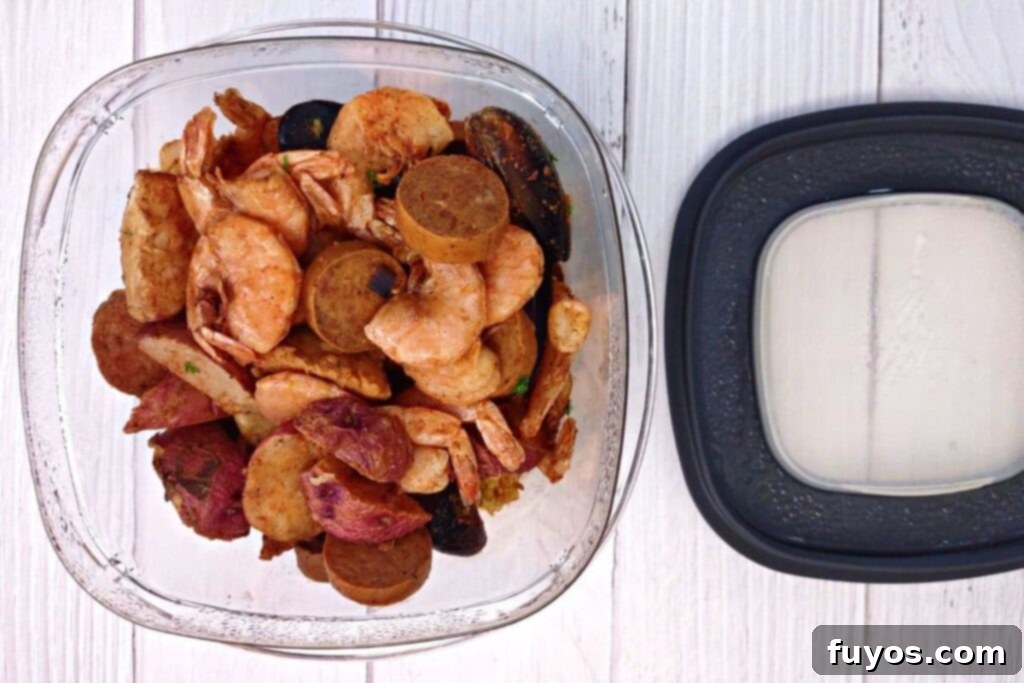
Gathering your supplies is the first step to a successful reheat. You’ll only need a few basic items to get your seafood boil from fridge to plate in minutes:
- Leftover seafood boil (including shrimp, crab, mussels, potatoes, corn, and sausage)
- A microwave-safe plate or shallow bowl
- A few sheets of paper towels
- Optional: 1 tablespoon of leftover seasoned boil water, plain water, or broth
- Optional: Extra seafood seasoning (like Old Bay) and melted butter for serving
Key Tips and Notes for Perfect Reheating
- **Choose Your Vessel Wisely:** While a bowl might seem convenient, a flat, microwave-safe plate is generally a better choice than a deep bowl. Spreading your food out on a plate allows for more even heating, reducing the risk of some parts getting overcooked while others remain cold. However, if a bowl is all you have, it will still work; just be mindful of stirring more frequently.
- **Boost Moisture and Flavor:** If you happen to have some leftover seasoned water or broth from your original seafood boil, add about 1 tablespoon to the plate or bowl. This little bit of liquid works wonders in reintroducing moisture and enhancing the flavor profile as the steam circulates. If seasoned water isn’t available, plain water or a splash of chicken or vegetable broth will also do the trick in keeping your seafood and veggies from drying out.
- **Prioritize Per-Portion Reheating:** For the best results, it’s always ideal to only reheat one portion of seafood boil at a time. Attempting to heat a large, crowded plate can lead to uneven cooking, where the center remains cool and the edges become rubbery. Single portions ensure consistent, perfect heating every time.
How to Reheat Seafood Boil in the Microwave: Step-by-Step Guide
Follow these simple steps to bring your seafood boil leftovers back to life, perfectly tender and flavorful:
- Prepare Your Leftovers: Carefully remove your leftover seafood boil from its original storage, whether it’s a plastic bag, foil packet, or storage container. Gently separate the components if they are stuck together.
- Separate Non-Seafood Items: The key to perfectly reheated seafood is to cook different components at different rates. Start by placing all the non-seafood items – such as potatoes, corn on the cob, and sausage slices – onto your chosen microwave-safe plate or shallow bowl. These denser ingredients take longer to heat through.
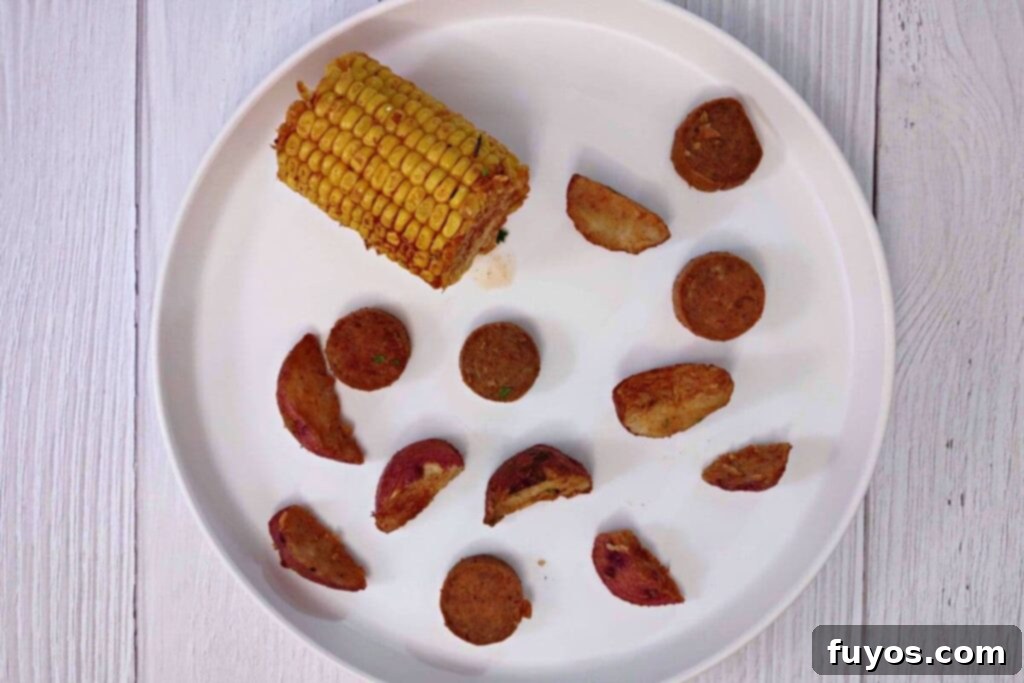
- Introduce Moisture: **Cover these non-seafood items with a damp (not soaked, but thoroughly moistened) paper towel.** This creates a steamy environment in the microwave, preventing the food from drying out and helping it heat more evenly. The moisture is crucial for tender potatoes and juicy corn.
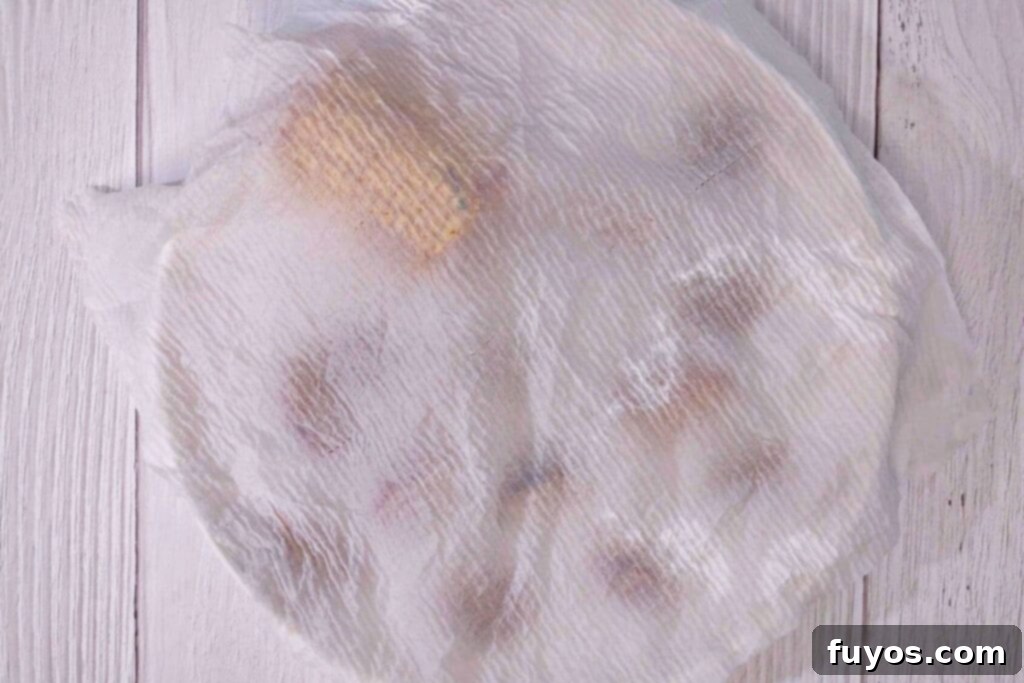
- First Microwave Blast: **Microwave on high for 1 minute.** This initial heating phase focuses on warming up the denser, less delicate ingredients.
- Stir and Add Seafood: Carefully remove the hot plate from the microwave. Use a spoon or fork to gently **stir the vegetables and sausage.** This helps distribute the heat. Now, it’s time to **add your delicate seafood**, such as shrimp, mussels, crab legs, or crawfish, to the plate, arranging them amongst the already warming vegetables.
- Add Liquid for Steam: If you skipped this step earlier, or simply want an extra boost of moisture, **add 1 tablespoon of water (or your reserved seafood boil water/broth) to the bottom of the plate or bowl.** This liquid will steam during the second cooking phase, keeping your seafood tender.
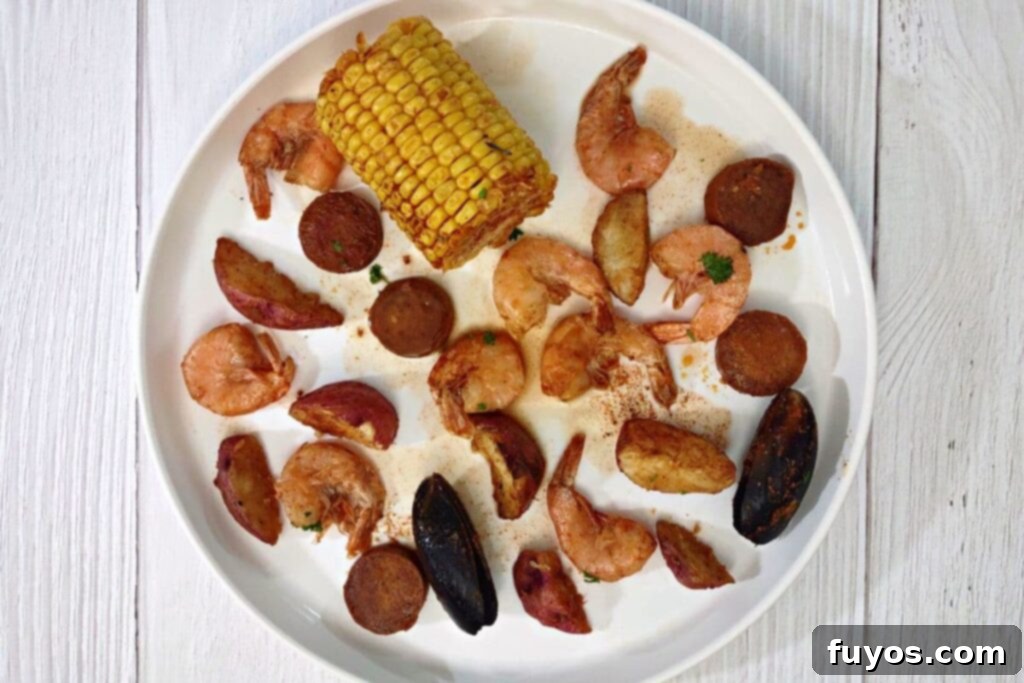
- Re-Cover for Second Round: If your paper towel has dried out, **moisten it again** (ensure it’s damp, not dripping) and **re-cover the plate or bowl**, making sure the seafood is also covered.
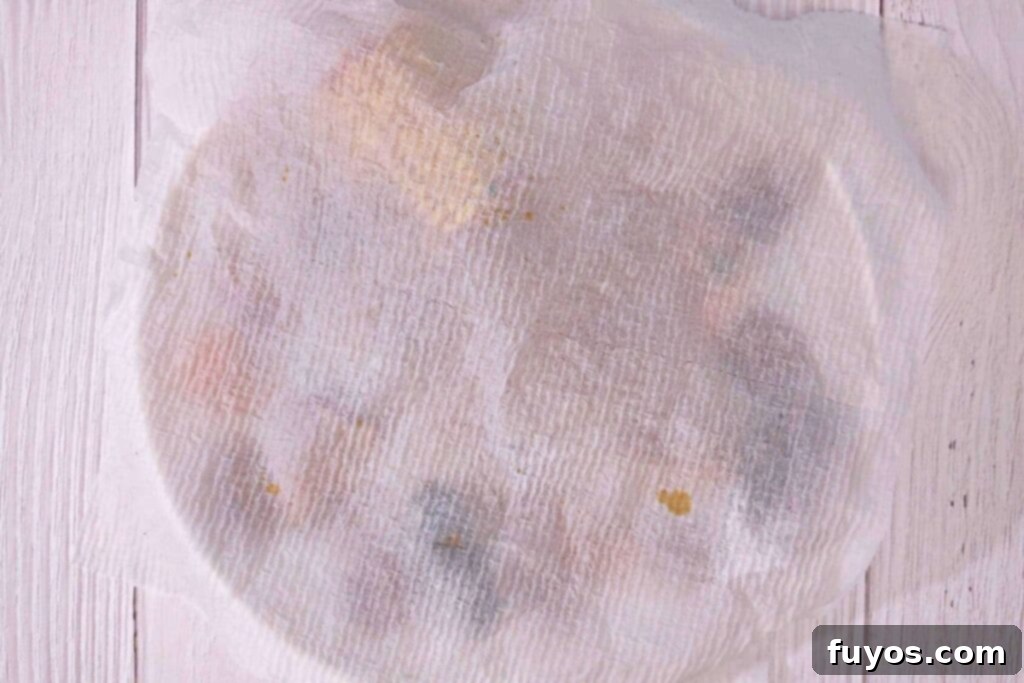
- Final Microwave Session: **Cook for an additional 45-60 seconds on high.** The exact time will depend on your microwave’s wattage and the quantity of seafood. Start with 45 seconds, then check. The seafood should be hot to the touch and steaming. Be careful not to overcook, as this is when seafood can become rubbery.
- Serve and Savor: Once thoroughly heated, carefully remove the plate. For an extra layer of flavor and moisture, consider **topping your reheated seafood boil with additional seafood seasoning** (like a sprinkle of Old Bay or Cajun seasoning) **and a drizzle of melted butter.** Serve immediately and enjoy your perfectly reheated, juicy, and flavorful seafood boil leftovers!
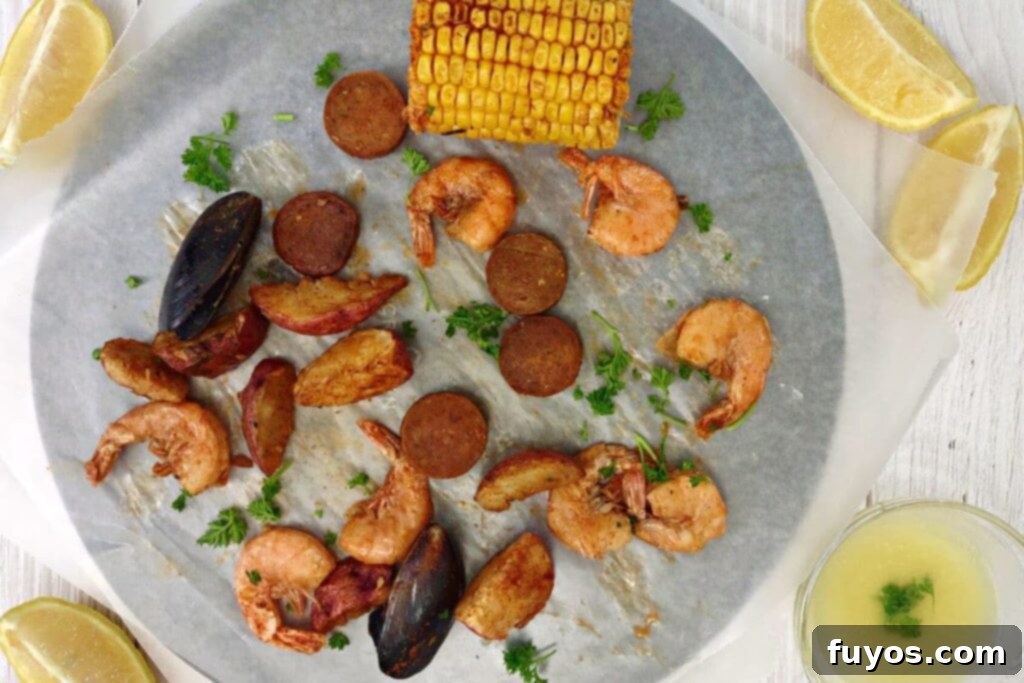
What Bread Goes With Seafood Boil? Enhance Your Meal!
A seafood boil isn’t truly complete without some delectable bread to soak up all those incredible seasoned juices! When reheating your leftovers, pairing them with the right bread can elevate your meal and add a satisfying, hearty element. Here are some fantastic bread options that complement a seafood boil beautifully:
- **Garlic bread:** A classic choice, its rich buttery and garlicky flavors perfectly meld with the seafood seasoning. Plus, it’s excellent for dipping and absorbing the flavorful broth.
- **Rosemary bread:** The aromatic hints of rosemary can add a sophisticated touch, contrasting nicely with the bold, often spicy, flavors of the boil.
- **Focaccia:** This Italian flatbread, often infused with herbs and olive oil, offers a wonderfully soft yet sturdy texture, ideal for soaking up broth and adding a delightful chewiness.
- **Cornbread:** A Southern staple, cornbread’s slightly sweet and crumbly texture provides a comforting counterpoint to the savory, spicy notes of a seafood boil.
- **Sourdough:** Its distinct tangy flavor and chewy crust offer a pleasant contrast and a robust base for absorbing all the delicious liquids.
- **Biscuits:** Fluffy, buttery biscuits are a comforting addition, perfect for a hearty and satisfying meal. Their tender crumb is excellent for sopping up sauce.
- **French bread / Baguette:** The crusty exterior and soft interior of a French baguette or similar crusty bread are excellent for tearing and dipping into the seasoned juices.
- **Ciabatta:** With its open, airy texture and rustic charm, ciabatta is another great option for soaking up the flavorful liquid without becoming soggy.
- **Cheese bread:** If you love a cheesy twist, cheese bread adds an extra layer of savory goodness that pairs wonderfully with seafood, especially with a hint of spice.
- **Cajun bread:** Often seasoned with spices similar to those in a seafood boil, Cajun bread enhances the overall flavor profile and doubles down on the deliciousness.
- **Dinner rolls:** Simple, soft, and versatile, warm dinner rolls are always a welcome addition, providing a gentle canvas for the boil’s bold flavors.
- **Rye:** For those who enjoy a denser, slightly sour bread, rye can offer an interesting flavor dynamic and a sturdy texture for heartier bites.
- **Olive bread:** The briny taste of olives baked into the bread can wonderfully complement the oceanic flavors of the seafood, adding another layer of complexity.
- **Crab bread:** If you can find or make it, bread baked with crab meat is an ultimate pairing for any seafood feast, intensifying the seafood experience.
Bread isn’t just a side dish; it’s an integral part of the seafood boil experience, perfectly designed to sop up every last drop of that flavorful, seasoned liquid. It also adds a satisfying fullness to your meal. The best part? When you’re reheating leftovers, you likely already have some cooked bread on hand, making it an effortless addition. Consider pairing your microwave-reheated seafood boil with some quick Frozen Garlic Knots in the Air Fryer, a batch of tasty Air Fryer Focaccia, or some delightful Pillsbury Cornbread Swirls in the Air Fryer for a truly complete and comforting meal.
Recipe FAQs: Your Questions Answered
Can You Microwave Seafood Leftovers?
Absolutely, you can microwave seafood leftovers. However, it’s crucial to be mindful of the cooking process as seafood is very delicate and can easily become overcooked in the microwave, leading to an undesirable rubbery texture. To prevent this, it’s always best to heat only a single portion at a time. Cook in short bursts and check frequently. A key strategy is to heat vegetables and denser ingredients separately from your delicate proteins. By following these guidelines, you can achieve excellent results.
Can You Reheat Seafood Boil in the Microwave?
Yes, reheating seafood boil in the microwave is a perfectly viable and incredibly fast option. First, you’ll need to remove the seafood boil from its original packaging, whether it’s a bag, foil, or container. While this method is undoubtedly the quickest way to enjoy your leftovers, it does carry the risk of overcooking the seafood if not done correctly, which can result in rubbery textures. Our detailed guide provides the precise steps to avoid this common pitfall.
How Do You Warm Up Leftover Seafood Boil?
There are several effective ways to warm up leftover seafood boil, including using the microwave, air fryer, conventional oven, or stovetop. Each method has its advantages. The microwave stands out as the fastest option, making it ideal when you’re short on time. For those prioritizing texture and a more “freshly cooked” feel, the oven is often considered the best method. However, with the proper technique, the microwave can yield equally delicious and perfectly textured results, as demonstrated in this guide.
How Long Do You Warm Up Seafood in the Microwave?
Generally, seafood typically requires between 30 and 60 seconds of microwave cooking time. This timeframe can vary based on several factors, including the specific type of seafood, the quantity you’re reheating, and the wattage of your microwave oven. To achieve the best possible outcome and prevent overcooked, rubbery seafood, it is highly recommended to use short cooking increments (e.g., 30-second bursts) and to check the food frequently for doneness. Seafood is done when it’s hot throughout and steaming.
Recipe Pro Tips: Ensuring Perfect Microwave Reheating
To truly master the art of reheating seafood boil in the microwave and ensure restaurant-quality results every time, keep these professional tips in mind:
- It’s best to **only reheat one portion at a time**. This practice allows your food to reheat much more evenly, eliminating cold spots and preventing overcooked edges, ultimately giving you a far better and more consistent result.
- If you have a sensor cooking microwave, I do not recommend using the sensor reheat option for seafood boil. Sensor cooking often attempts to bring all ingredients to a uniform high temperature, which will likely **dry out your delicate seafood and make it rubbery** in the microwave’s attempt to thoroughly heat everything else on the plate. Manual timing gives you precise control.
- **Cut your potatoes into halves or quarters** if you have whole ones from your original boil. Smaller pieces will heat through much more quickly and evenly than large, whole potatoes, ensuring they are perfectly steamy and tender alongside your seafood without requiring extended microwave time.
- My **times are based on a 1000W microwave**. If your microwave has a different wattage (check the inside of your microwave door or appliance manual), your cooking times may vary slightly. Lower wattage microwaves might require a bit more time, while higher wattage ones might need slightly less. Always start with the lower end of the recommended time and add more in short increments if needed.
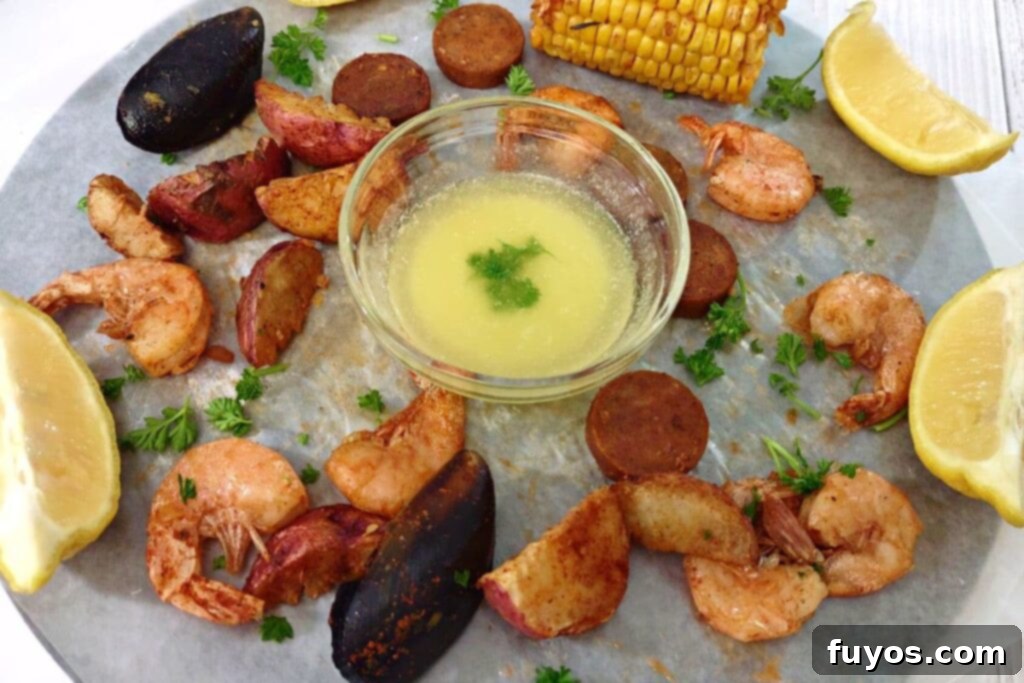
More Quick Reheating Guides
How to Reheat a Baked Potato in the Microwave in Minutes
Reheat Corn on the Cob in the Microwave in Only a Minute!
How to Reheat Salmon in the Air Fryer: Easy Leftovers!
Reheat Spring Rolls in the Air Fryer: Crispy in 5 Minutes
Reheat Quesadillas in the Air Fryer for a Warm & Crispy Meal
How To Reheat Fries In The Microwave
Final Thoughts on Microwaving Seafood Boil Leftovers
Now that you know exactly how to reheat seafood boil in the microwave, you can confidently enjoy your delicious leftovers even when you’re short on time. This method offers unparalleled speed and convenience, making it a fantastic choice for quick lunches or easy dinners.
While microwaving seafood sometimes gets a bad rap for potentially overcooking, our carefully designed technique ensures that you can achieve outstanding results every time. You’ll consistently turn out perfectly juicy shrimp, tender crab, and steamy vegetables, allowing you to savor every last bite of your seafood boil just as much as the first.
Don’t forget to pair your perfectly reheated seafood boil with some delicious bread. The bread is ideal for soaking up all those incredible seasoned juices, adding another layer of flavor and satisfaction to your quick, comforting meal. Enjoy the ease and deliciousness of perfectly reheated seafood boil, any day of the week!

How to Reheat Seafood Boil in the Microwave
Equipment
-
Microwave (times based on 1000W)
-
Microwave safe plate or bowl (plate preferred)
-
Paper towel
Ingredients
- 1 Portion leftover seafood boil
- 1 Tbsp water or seafood boil water (optional)
Instructions
-
Remove leftover seafood boil from the bag, foil packet, or storage container.1 Portion leftover seafood boil
-
Place all non-seafood items (potatoes, corn, sausage) onto a microwave-safe plate.
-
Cover with a damp (not soaked) paper towel.
-
Microwave on high for 1 minute.
-
Remove the plate, stir the vegetables and sausage, then add your seafood (shrimp, mussels, crab legs).
-
Add 1 Tbsp water or seafood boil water to the bottom of the plate or bowl (optional).1 Tbsp water or seafood boil water
-
Moisten the paper towel again if needed and re-cover the plate or bowl.
-
Cook for an additional 45-60 seconds on high, or until the seafood is heated through.
-
Top with additional seafood boil seasoning and melted butter if desired, and enjoy warm.
Notes
- I find that a plate is a better choice than a bowl as it allows you to spread the food out better for even heating, but you can use a bowl if that’s all you have.
- If you have some leftover seasoned water from the boil, add 1 Tbsp or so to the plate or bowl to help with moisture and flavor (but plain water or broth is acceptable too).
- It’s best to only reheat one portion at a time. This allows your food to reheat more evenly and gives a better result.
- I do not recommend using the sensor reheat option if your microwave has one. This will dry out your seafood and make it rubbery in the microwave’s attempt to heat everything else.
- Cut your potatoes into halves or quarters if you have whole ones, as this will make reheating them a lot easier and more even.
- My times are based on a 1000W microwave. If you have a different wattage, your cooking times may vary slightly.
- Exact nutritional values will vary based on the contents of your original seafood boil, so please consider this a guideline only.
Nutrition
Number of total servings shown is approximate. Actual number of servings will depend on your preferred portion sizes.
Nutritional values shown are general guidelines and reflect information for 1 serving using the ingredients listed, not including any optional ingredients. Actual macros may vary slightly depending on specific brands and types of ingredients used.
To determine the weight of one serving, prepare the recipe as instructed. Weigh the finished recipe, then divide the weight of the finished recipe (not including the weight of the container the food is in) by the desired number of servings. Result will be the weight of one serving.

Did you try this recipe?
Mention @TheDinnersDoneQuick or tag #dinnersdonequick! for even more!
Pin Recipe
Leave A Review
